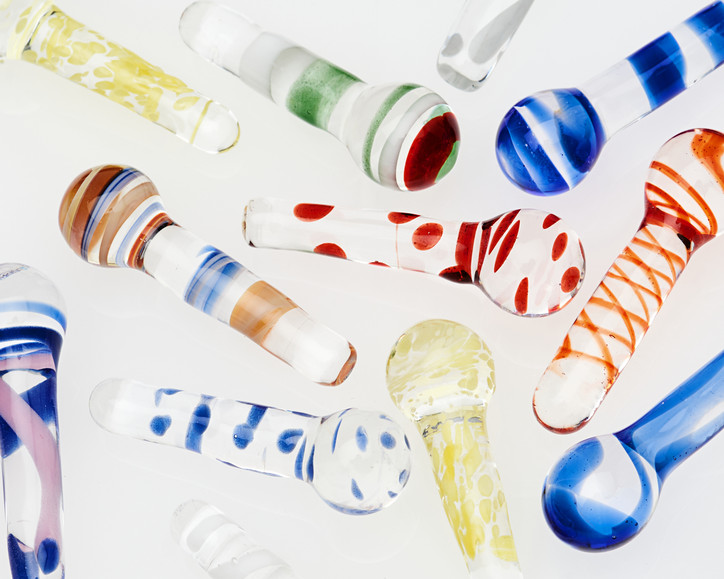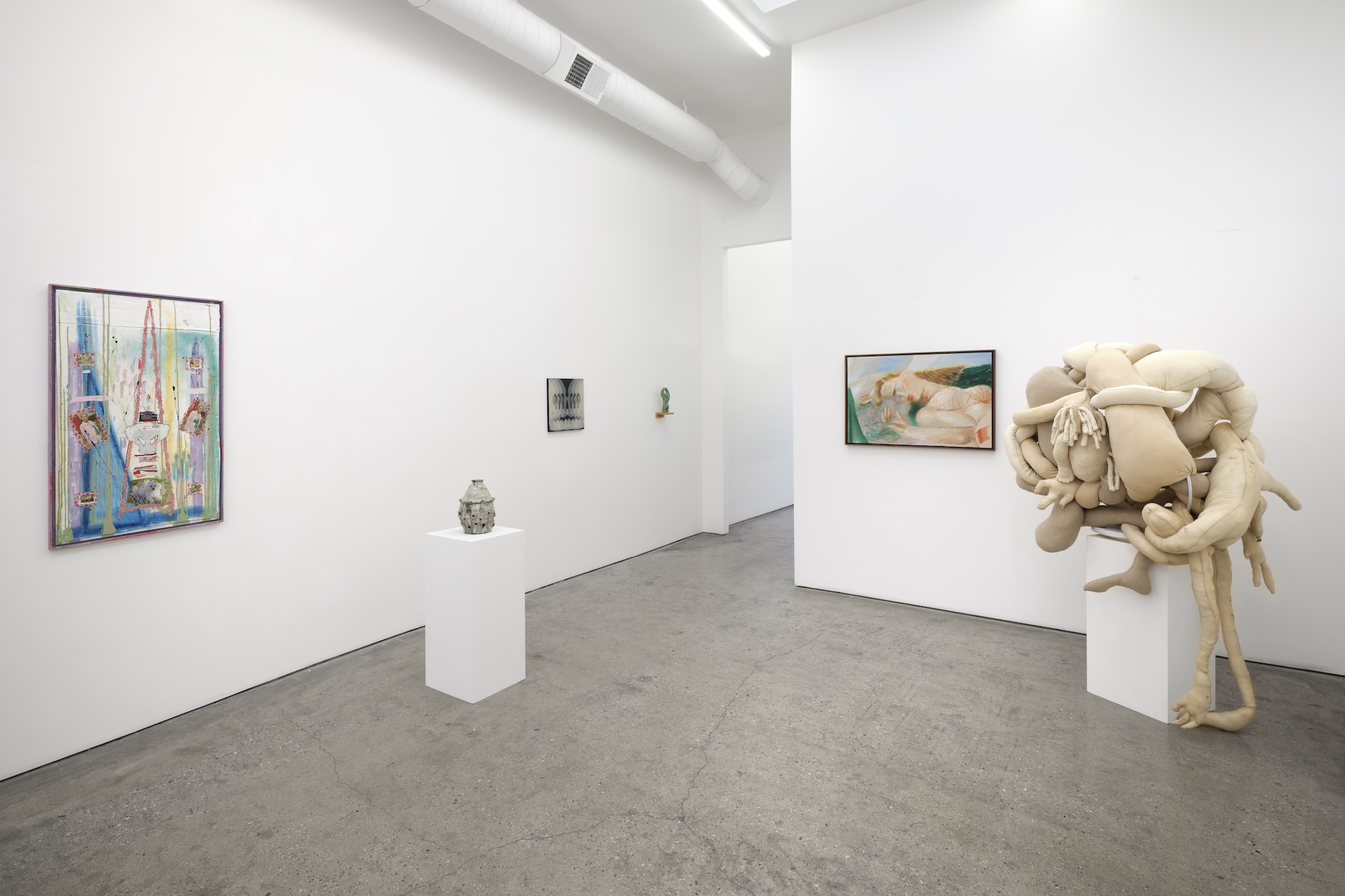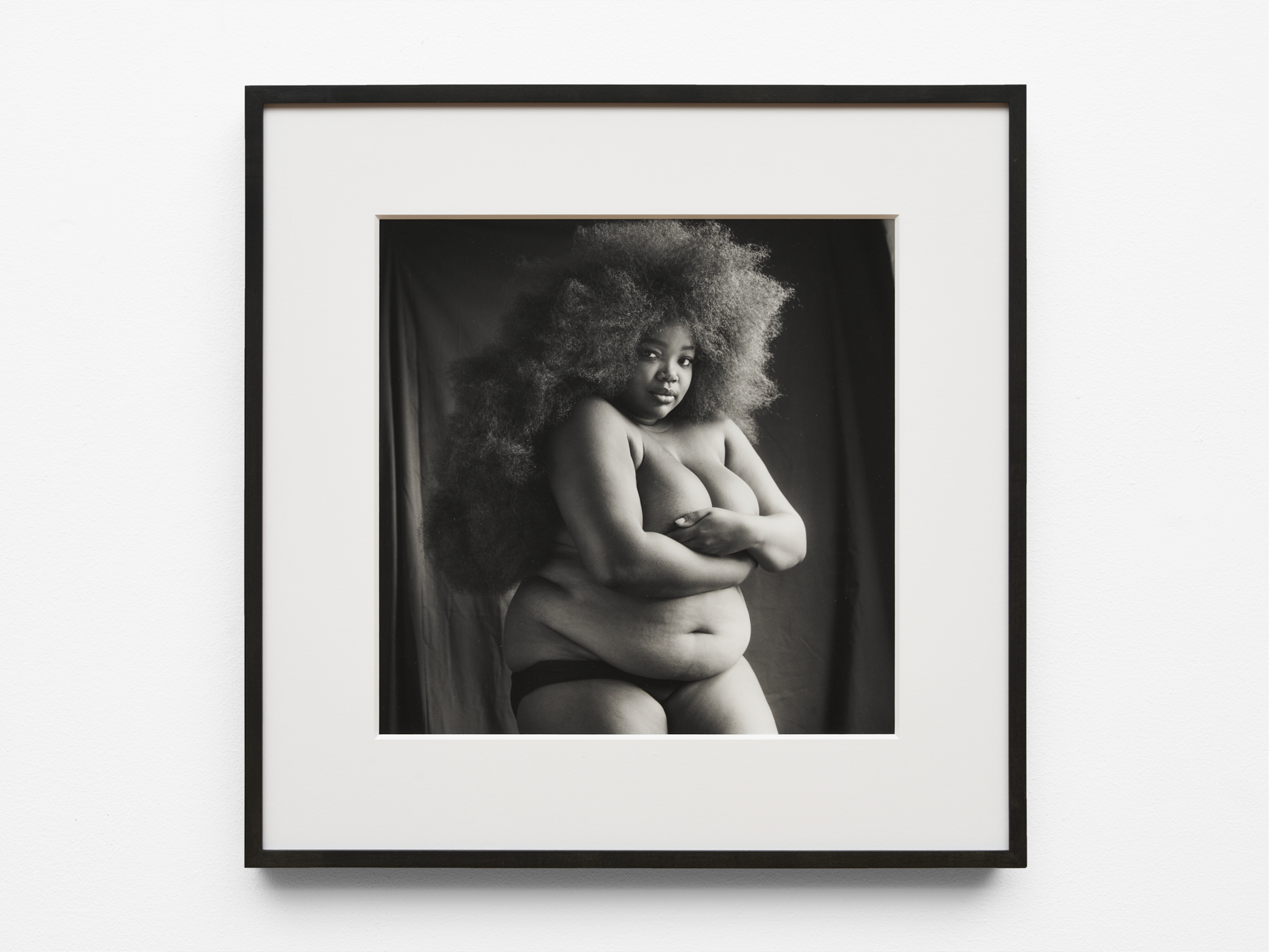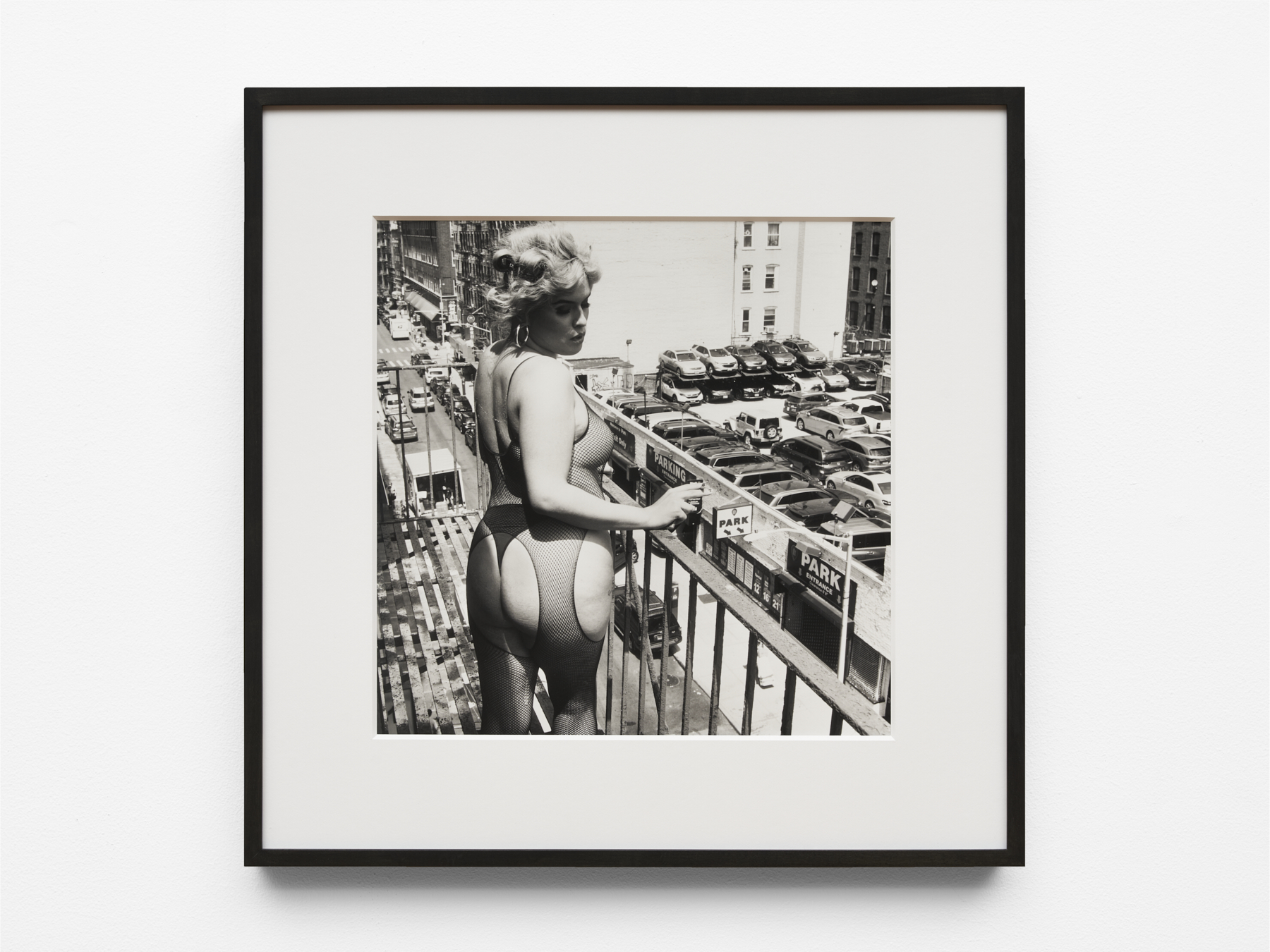Miu Miu M/Marbles

The Miu Miu M/Marbles Stool is available for purchase exclusively at the Miu Miu Miami Design District boutique and miumiu.com.


Stay informed on our latest news!

The Miu Miu M/Marbles Stool is available for purchase exclusively at the Miu Miu Miami Design District boutique and miumiu.com.



"Real estate is tough in LA," she explained recently, acknowledging the challenges while emphasizing her commitment to the artists and community she’d worked with for years. "I felt a responsibility to preserve what I had built that wasn't mired in scandal. I had created something great here — my kid goes to school down the road, I live fifteen minutes away. This is my home.”
Two of the galleries are reserved for solo shows, while the third serves as a curated collection, where an artist handpicks favorite works from their peers. For the solos, Mulrooney emphasized the importance of creating intergenerational connections, featuring 22-year-old painter Piper Bangs and 45-year-old Marin Majić.

In Bangs’ "Fruiting Body", you’re invited into a dreamy world where droopy pears roam between forest floors and clouds, waiting for the sun to pierce through. In Marin Majić's "Dawning", technicolor and marble dust glow on drawings of nightclubs, speedboats, and early morning plane rides.
"The exhibitions speak to each other," Mulrooney said. "[Both artists] have a world-building process that teaches us their way of seeing."

Meanwhile, "Saints and Poets", curated by artist Jon Pylypchuk, sparks its own conversation. "I love this idea of finding out what makes [an artist] tick," Mulrooney shared. "Who are they looking at, who did they go to school with, who is in their circle of artists? In the 16th or 17th century, you’d see these groups of artists referred to as a ‘School.’ 'Saints and Poets' is like the School of Jon Pylypchuk."
In Jon's "school", playful characters made of bronze-casted balaclavas spring to life, and a sculpture of entangled, human-shaped cotton feels so intimate you shouldn't be looking. (I kept looking.)
"I want you to feel good about what you saw," Mulrooney said. " Maybe you didn't like it, maybe you loved it, but you're still like, ‘Wow, this has been interesting.’"

In the coming months, the gallery plans to showcase other former-Mier artists before transitioning to a "substantially different" roster. "It was only natural for me to call upon the artists I've worked with before," Mulrooney reflected. "They are people I know and support, and I’ve seen their art and careers grow."
Her voice carried a sense of gratitude as she showed me around the galleries, pointing out hidden details — minute brushstrokes, delicate chiseling. Their work spoke to her, taught her things, meant more to her than what was left on. "I feel so honored that so many of the artists have trusted me to move forward and keep presenting their work," she said. "A lot of good has come out of this. I'm taking a space from my past and making it my own. As I grow and differentiate myself from where I [previously] worked, it's important for me to build my own voice."
She laughed, adding, "It's a coming-of-age story, a little bit, which is kind of ridiculous – but here we are.”

By his estimation, Dakkar began tattooing “5 or 6 years ago,” and in that time, his art has found its way onto the bodies of hundreds of New Yorkers (including two members of our on-set crew) and the screens of tens of thousands more online admirers. He gives nearly exclusively custom tattoos, creating the design in collaboration with the tattoo’s recipient and embracing the improvisation of the moment. On the eve of Dakkar’s birthday, we paid a visit to Musiquarium, the Greenpoint studio he shares with a handful of other artists. For proof of his love of spontaneity, look no further than this story; Dakkar simultaneously gave an unplanned custom tattoo to our makeup artist Cassandra Lee while I asked him the questions below.
Do you remember the first tattoo you ever gave?
For years, two really close friends of mine were trying to convince me to tattoo, way before I ever did. The first tattoo I ever gave was at my friend’s house. He basically invited me over, and when I got there, he surprised me with his mom's boyfriend's tattoo machine, and he forced me to tattoo him.
It looked really bad. I think I drew a witch hat on top of a tattoo of a punk guy. [Laughs]
Doing cover-ups like that is the first way I started tattooing — they’re kind of like cover-ups, I've been trying to find a good word to describe them. It was the only way I would tattoo.
It's my favorite way to tattoo. It feels like giving an old tattoo a makeover, like drawing Gene Simmons makeup on a newspaper face or something like that.
Why were your friends trying to get you to start?
A lot of my friends knew me as someone that was capable of drawing. I think they pushed me to tattoo because they saw me just working various dead end jobs and not really using my time well.
When did you start tattooing at this studio?
I started tattooing at this studio about three and a half years ago. I was working with my friend Tamara Santabañez. Jackson and Carson, who work here, had reached out to me because they wanted to open up this studio. So I ended up joining them, and we opened this place together. There's about five of us that work here.


What’s your favorite place in New York?
My favorite place in New York is probably my house. I'm a big homebody. But there's some other little gems in New York that I really love, like Holographic Studio. Street Fever at Punk Alley is one of the best places in New York to go — it's a junk shop and tattoo studio.
I always try to support the mom and pop shops. Never go to a 7-Eleven or a Starbucks or anything like that.
What is the most memorable tattoo you’ve ever given someone?
I think the most memorable tattoo I've done, or the one that has stuck with me the longest, is an upper back piece I did in the pictographic letters I'll do often. It says “energy” across my friend Cosmo’s back. I did it in Melbourne, Australia. We had one day to do it. I freehanded it, and we were there for about 12 or 13 hours. That feels like one of my favorite tattoos I've done.
Do you always do customs?
Yeah, I've always done custom tattoos. I think there's something really nice and special about the collaborative nature of sitting together and talking out an idea. I really like feedback and input when I'm tattooing. I'll often have moments where I'll stop and ask a question.
The majority of my work ends up feeling collaborative — I guess my entire body of tattooing is somewhat collaborative with every person that comes in. The way I book appointments, I almost require a prompt — whether it's an idea or just a photograph, it's basically just a jumping-off point. I feel everyone out and just slowly come up with what we're doing.
Every tattoo I do is conceived, drawn, and done on the spot. There's a lot of spontaneity and it’s all based on intuition. I never draw things up beforehand.
Depending on the type of imagery or idea we're working with, I'll sometimes try to take a little time to sit and think about it, and how we want to approach it. But I really enjoy leaving it up to the actual day and moment of our appointment.
Sometimes the placement of a tattoo will dictate the image, and sometimes an image will dictate its placement. A lot of things I do freehand, but in other instances, I'll draw beforehand with the person there. Even when things are pre-drawn, I always need to leave a little bit of room for improvisation.

KEEGAN wears MA-1 HERITAGE BOMBER JACKET by ALPHA INDUSTRIES, HAT by STAR SHOP, SHIRT and PANTS are TALENT’s OWN
Is it ever stressful?
I think I go into every tattoo feeling stressed. [Laughs] In general, the way I draw, like with anything, mistakes happen. Sometimes the things you omit are just as important as the things you include. Sometimes things may not happen exactly the way I imagined, but I always embrace it.
What was the first tattoo that you ever got?
The first tattoo I got was by Big Steve at Fun City Tattoo. He's a good old friend of mine, and he used to tattoo me and all of my friends in high school — or, not in high school, but, like, when we were younger.


What’s your go-to deli order?
Some kind of carbonated beverage. Something with caffeine in it. Something sweet. I like ice cream sandwiches. If I do get a sandwich at a deli, I usually go for pepper jack cheese, lettuce, onion, mayo, mustard, salt and pepper, and vinegar on a roll.
No protein in the sandwich?
I don't really fuck with processed deli meats like that.
What do you like to eat?
My favorite place to eat around here is definitely Ashbox. I think it's one of the best cafes in all of New York.
Out of the places that I grew up going to that are still around, I’m big fan of Two Boots Pizza. I spent a lot of time there, it's still probably one of my favorite slices in New York. And when I was growing up, almost every other corner was a Ukrainian or Polish diner. Veselka’s still there, but like, literally every corner was a Ukrainian diner. I grew up eating pierogies, I feel like Ukrainian food is like my comfort food.


If you weren’t a tattoo artist, what would you be doing right now?
I would probably be an ascetic, and live on a farm. Or be a nurse. Or maybe a baseball player.

What makes a “bombshell” to you? What drew you to that archetype?
Ethan James Green— To me, the bombshell is defined by sex, hair, and confidence. I’ve always felt inspired by glamorous, powerful women, and the bombshell felt like a paragon of glamor and power.
Who were some of the formative bombshells in your life?
My most formative bombshells were Mary Magdalene and my grandma.
As a male photographer, how do you relate to that archetype? Do you think there is something about the spirit of the bombshell that transcends gender?
While I’ve always been fascinated by these powerful images of femininity, they don’t reflect my experience. There’s a certain unattainable quality about the bombshell for me, which I think is part of what I’ve personally found so transfixing. Even though these women are involved in a highly codified, gendered performance, I think anyone can identify with their expressions of femininity.
Is everyone in the book someone that you knew personally? How did you decide who to ask to be a part of it? What does that existing relationship with a subject / model contribute to an image?
I already had personal relationships with most of the models and people who worked on the project, but I then met a few new collaborators through mutual friends involved with the body of work. I think the personal connections of everyone involved created a feeling of trust that was integral to the project. That trust created an environment where the subjects felt comfortable to take control and pose themselves; I just followed their lead. The personal connection between me and the team allowed for a shorthand that let us be spontaneous and an intimacy that let us experiment together.
Now that some years have passed since you shot these images, how has your perspective on them changed, if at all?
I’m just as excited about the images as I was when I first shot them. The project was born out of a desire to create something sexy at a time when that felt somewhat indulgent or out of style, even though it was something me and the collaborators all wanted to participate in.







BOMBSHELLS is on view at Kapp Kapp until October 26th.